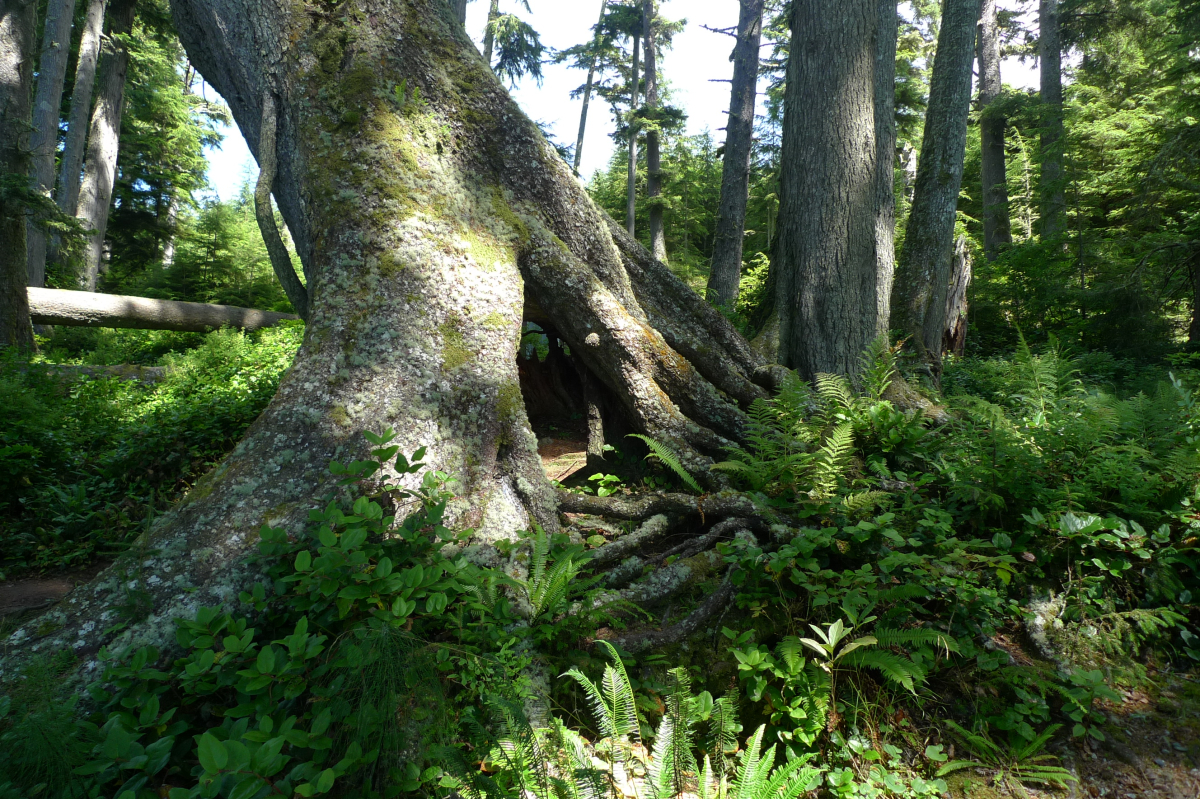Support strong Canadian climate journalism for 2025
When the B.C. NDP was re-elected in 2020, it seemed like a new page was finally turning for forests. One of the pillars of the party’s campaign was a promise to implement “the full slate” of recommendations an expert panel known as the Old Growth Strategic Review had made that same year. This represented a major shift, one that would finally make the most at-risk old growth forests immediately off limits to logging.
Instead, the last several years have followed an all-too-familiar pattern: while the province fumbles on its commitments, old growth falls; forest defenders are arrested; mills close; and ecosystems are pushed further toward the brink of collapse by major timber companies.
Just over a year after the NDP formed a new government, the province seemed to reaffirm its commitment to protecting old growth. The Ministry of Forests released maps detailing 2.6 million hectares of candidate deferrals — forests where it said it intended to temporarily pause logging, in government-to-government discussions with First Nations. When successive announcements emphasized that B.C. had deferred 1.7 million hectares of old growth in 2022, and then 2.4 million hectares by late 2023, it was clear the province was showcasing its apparent success.
But the reality tells a much less optimistic story etched in the new clearcuts and roads dotting the land, especially in the central interior. The satellite monitoring tool Forest Eye shows hundreds of old growth logging alerts from the past several years, amounting to nearly 30,000 hectares.
The picture became sharper this past March, when the Canadian Centre for Policy Alternatives published a leaked map that “radically departs” from the deferrals recommended by scientists and experts in 2021. The map, which was previously internal to the B.C. government, confirmed what Forest Eye data had shown us – the logging industry is still cutting down the biggest-treed old growth with impunity while the province publicly celebrates its “wins.” The province responded by underscoring the importance of having Nations’ consent to implement deferrals, something which is essential for any land-use decisions — including logging. But the Ministry of Forests’ lack of transparency, alongside ongoing old-growth logging, makes it hard for people to take the province at its word.
New analysis from Stand.earth Research Group further confirms that logging has proceeded in places where deferrals were supposed to move forward, and that logging companies have even clearcut forests where the government says deferrals are in place: trees have been felled in at least 324 areas that B.C. is counting toward its tally. Since November 2023 — the date on the leaked map — 17 Forest Eye logging alerts reveal that about 120 hectares of old growth forests have been destroyed.
Not only does this shine a stark spotlight on B.C.’s broken old-growth promises, it also gives people more reason to doubt the current government's ability — or willingness — to rein in the forestry sector beyond the NDP’s political aspirations.
Breaking down the province’s numbers and comparing them to the leaked map, we can see through the smoke and mirrors that allow the government to celebrate deferrals in areas that were in fact already protected, like provincial parks, or in areas that are not economical for industry to harvest.
The places left disproportionately open to logging are the same places where private logging companies like West Fraser and Canfor are targeting old growth right now — regions like the Skeena and Omineca, around Smithers, Houston, Burns Lake, and Prince George. Some of these communities have faced recent mill closures — a devastating prospect for workers and families. It’s an insult that these major companies are clearing as much old growth as they can before picking up and moving to the United States — an age-old legacy of abandonment permitted by B.C.
The province has botched the old-growth deferrals process while sacrificing forests and communities, and its missteps extend to its ongoing failure to appropriately work with First Nations as title holders over their own lands. Funding, including from new sources like the Nature Agreement, should be made easily available so that nations are not forced to choose between keeping their forests standing and economic opportunities for their communities. The province must also implement deferrals in culturally important areas in addition to — not instead of — areas where old growth is at risk.
With just a few months before B.C. goes to the polls again, time is running out for the NDP to recommit to its 2020 promises and rebuild the trust of a voter base that continues to overwhelmingly support old growth protections. Otherwise, it’s just business as usual: big industry will profit, forests will fall, and the climate — along with local communities — will continue to pay the price.
Tegan Hansen is the senior forest campaigner at Stand.earth where she works across the organization’s climate change and biodiversity campaigns, with a focus on defending forests and old growth. She lives on Musqueam, Squamish, and Tsleil-Waututh Territories (Vancouver, British Columbia).



Comments
Shameful. The BC NDP environment minister is my MLA. There is no one else to vote for with risking one of the two right wing parties gaining power through vote splitting on the left and centre. That fact will keep the Greens tamped down to a meaningless level forever.